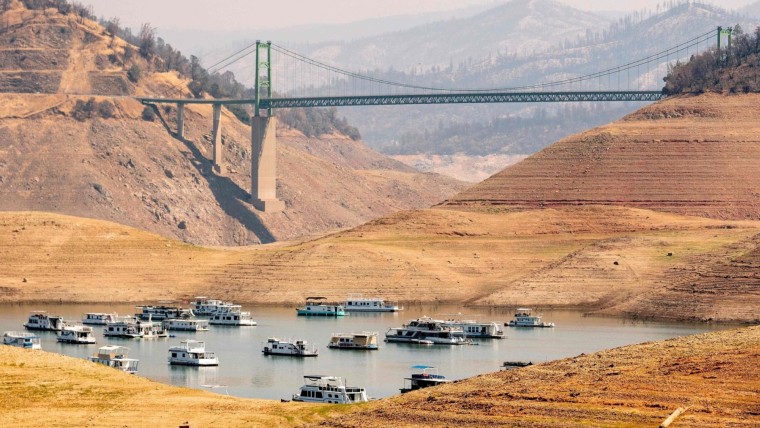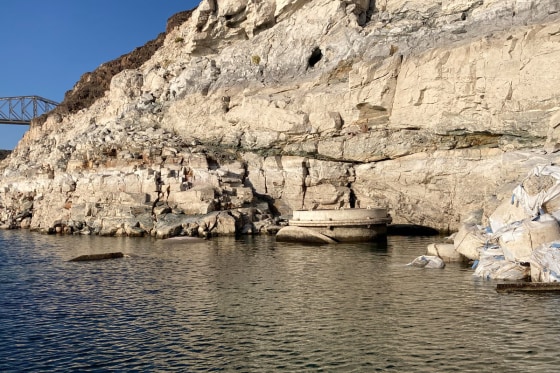The megadrought gripping the western United States has pushed Lake Mead's water level to historic lows, below an intake valve that first began supplying Nevada customers in 1971.
The emergence of the intake valve in the nation’s largest reservoir drew attention to the future of the Colorado River basin and the Southern Nevada Water Authority, which supplies water for 2.2 million people, including in the city of Las Vegas.
The valve's surfacing was long expected and came after three states in December announced a new plan to combat dropping water levels.
Last summer, the lake's level dropped to what was then the lowest in its history. This, in part, prompted stakeholder states California, Arizona and Nevada to allocate $200 million more in incentives to reduce water consumption and add what they hoped would raise Lake Mead's level by 16 feet.
That December plan came after multiple belt-tightening plans were scrapped early because of unexpectedly severe drought conditions, NBC News reported.
SNWA spokesperson Bronson Mack said the authority completed a "seamless transition" during its shutdown of the exposed intake valve and powering-up of the low lake level pumping station for the first time.

The SNWA said in a YouTube video that the valve, which emerged Monday, became inoperable when Lake Mead's surface drops below 1,050 feet above sea level.
SNWA's second valve becomes inoperable shortly after Lake Mead's surface drops below 1,000 feet above sea level.
Bronson said SNWA has no estimate of how long it will take for the lake to drop below the second valve, but they are already prepared for the possibility.
SNWA's newest, third intake valve extends over 2 miles toward the center of Lake Mead and ensures "southern Nevada has access to its full share of Lake Mead," SNWA said in the video.
That means the SNWA gets the reservoir's water even after the surface drops below 900 feet above sea level.
A high powered pumping station had to be constructed for the third valve — and put into use this month — because of the lake’s continued drop in water levels.
The Low Lake Level Pumping station was completed in 2020 and began pumping April 1 in a "restricted, limited capacity," Bronson said.
Even more pumps are "on standby, ready to go" to replace the pumping capacity lost if or when the second intake valve emerges from the surface of a further shrinking Lake Mead, Bronson said.
The megadrought currently gripping states like California, Nevada, Colorado and Arizona is the worst since at least 800 A.D., according to research published in the journal Nature Climate Change.

